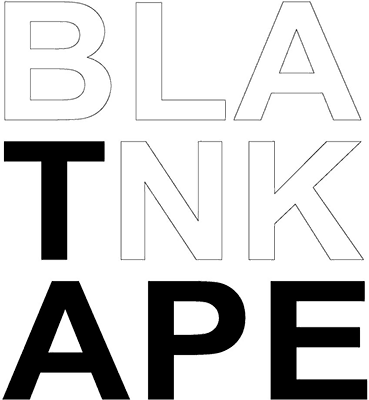TECHNOPHOBIA OR CONSUMERISM?
In the second half of the 20th century, the French psychoanalyst Jacques Lacan referred to these objects of desire and their insertion into the capitalist logic. According to him, the ones intensely caught by the speed of techno scientific development are called “consumable-subjects” who invest in becoming “desirable” and therefore consumable to the eyes of possible partners or to the Market’s eyes. This approach is similarly found on the most updated publications of other thinkers such as the Polish sociologist Zygmunt Bauman and the French philosophers Gilles Lipovetsky and Jean Baudrillard. Despite its sociocultural relevance. such thought -or it’s misunderstood interpretation- contributes to a technophobic view, which in the artist field represents a naive posture on some contemporary issues. As a way to unfold this reflection we are publishing an displayed by the site Made-Up Disease with the north American artist Raphael Ortiz about portable museums and virtual reality.
The cinema history holds one of the most curious examples of technophobia, regarding its own creation post industrial revolution and its mechanical condition as a way to exist. Charles Chaplin, Fritz Lang, Ridley Scott, Stanley Kubrick and other directors even more popular, used the fear of technology in their films either directly or as a metaphor to other phobias. Nevertheless, the rising access to technology enables the independent production as well as the inclusion of non-specialized creators in other fields. The spread of digital cameras (small or included in other portable gadgets), strengthens the presence of what the author and cinema professor of the Arts Institute (UNICAMP) Fernão Pessoa Ramos calls “subject-of-the-camera”. A definition for people who accidentally register the irruption of an event, left to their own devices to the circumstances. This subject is surprised by the extraordinary without having searched it. In a simple search on sites like YouTube one can realize the amount of material about natural catastrophes or unique events, which were mostly captured through mobile phones and amateur recordings.
The phenomenons brought to light due to the access to technology are even more visible when it comes to music. The electronic composition was combined with other styles and absorbed at the peripheries and slums. In Brazil, the carioca funk and the technobrega are examples of the success of this independent production. We can easily find beats created by gadgets such as MPC’s (hardware sampler) or MPD’s (software sampler) in funk clubs and in the hip hop scene. Concerning the global peripheral electronic musical scene, we’ve already published the written by Ronaldo Lemos, director of Creative Commons Brazil and of the Technology and Communication Centre (FGV/RJ). This article was created to the i/Legitimo exhibition at the Sound and Image Museum in São Paulo.
Although more usual in our lives day by day. it’s important to remember that the gadgets aren’t part of the reality throughout Brazil. If the access to electricity in some places in Brazil is still restrict. the access to internet. hardwares. softwares and other electronic devices is impossible. Furthermore. there is an obstacle even greater that involves peopleware. technology users. The lack of this ideal situation to digital art turns creativity into the main solution. To some extent. the combination of these factors with the modernist concept of anthropophagy created in the national production a space for pieces built from obsolete technological references (low-tech).
Nowadays the initial purism was overcome when it comes to technique. Cinema is created and projected with digital equipments. Fine arts incorporated the new media. even though the term is imprecise and refers to the idea of novelty as a parameter to analyses. resurrecting a paradigm of the modern vanguards. The artist and Digital Culture professor (PUC/SP) Giselle Beiguelman criticizes the “difficulty that the contemporary system of art faces to absorb the cultural net and the digitalization of the everyday life in its most radical expressions”. In spite of that, festivals and specialized collectives emerged throughout the world. Creators did not give up on using technology as a mere tool or theme in their production nor abandoned the traditional media. The pieces/work related to digital media started to complexify technology in the aesthetic field. connected to information development research. communication and science.
The exhibition “I <3 MY GADGET” operates with the dichotomy of the technological revolution. Among pieces that praise this evolution and others that criticize it. different levels of irony and affection are established by the artist on their work. In this first edition. we present pieces from Robert Whitman, Yuri Suzuki, Mariana Manhaes, Vivian Caccuri, Claudio Bueno, Sascha Pohflepp, Carlos Emilio, Felipe Meres, Leandro Lima e Gisela Motta, Andrews F.G., Edadz / Patrick Guera, Edison / Mike Landry, Dj Amazing Clay / WilIianDjMix, elle p. & iftah, Pam Chung, Panetone, lgor Amín e Nem Só. Bonitinho&Ordinário / Antartist. Vladimir Cunha e Gustavo Godinho, Leandro HBL e Wesley Pentz.
Paulo Mendel
Curator
thanks to BakerlE | Walter Patrick Smith | Julie Martin | Hans-Cristoph Steiner | Shawn Van Every | Alex Tyson | Made-Up Disease | Isabela Alzuguir | Leopoldo Caseiro | Overmundo | Galeria Experiencia | Lucas Bambozzi | Maria Monteiro l Carolina Apolinário | Fabio Alves | Adam Patch
São Paulo, Brazil | 2010
